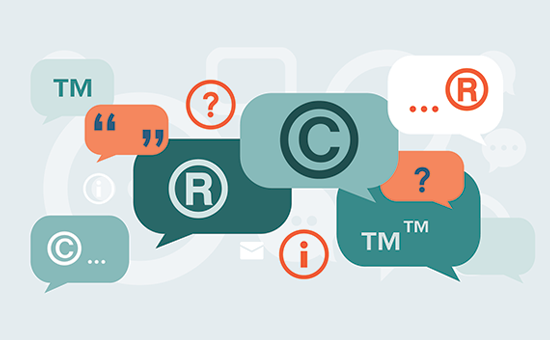
The producers of cinematograph films and sound recordings, as well as the authors of literary, musical, theatrical, and aesthetic works, are granted a copyright. Names, brands, slogans, one-word or two-word phrases, stories, techniques, and factual material are not covered by a copyright. Thus, copyright is primarily employed to safeguard the originality of authors, composers, playwrights, designers, architects, and others who create sound recordings, motion pictures, and computer software.
What is a trademark.
A trademark is a term or a symbol that a company uses to distinguish its products or services from those of other companies that provide comparable products or services. The applicant must submit a trademark application in the required format to the applicable trademark Registrar in order to get a trademark registered. In general, trademarks are used to protect a variety of things, including company names, slogans, and brand names.
Difference Between Copyright and Trademark
Both copyright and trademark have different and distinct uses. Their validity and the requirement for registration also vary as follows
- Copyright Literary, musical, dramatic, and aesthetic works, including motion pictures and sound recordings, are frequently protected by copyright.
- Software, programmes, tables, and databases can all be registered as “literary works” under the Copyright Act.
- Any person who has a copyright is required to utilise it sensibly in accordance with the terms of the copyright law. A copyright is a legal right in the eyes of the law that grants an exclusive right to the person who originally created the work.
- Copyrights are given to those who are creative or who write original works. To protect their original works, authors, poets, and painters utilise copyright; however, in order to obtain copyright for software, the source code must be submitted with the application.
Trademark
- Trademarks are frequently used by individuals, companies, and nonprofit organisations to protect names for products and services, company names, slogans, and other identifiers.
- Software, concepts, and ideas cannot be protected by trademarks. However, a concept, piece of software, or item’s distinctive name might be protected by a trademark.
- Many firms place their trademark on the product packaging or the actual product to prevent others from utilising their goods, brand, or logo.
- Anyone who uses a trademark without permission is subject to legal action from the trademark owner.
The IP specialists at docsplanner will offer legal counsel and end-to-end assistance, from submitting the application to gathering the necessary data to registering your work. Since everything is done online, there is no need to go outside and follow up with government employees. Additionally, we will take care of all necessary documentation.
